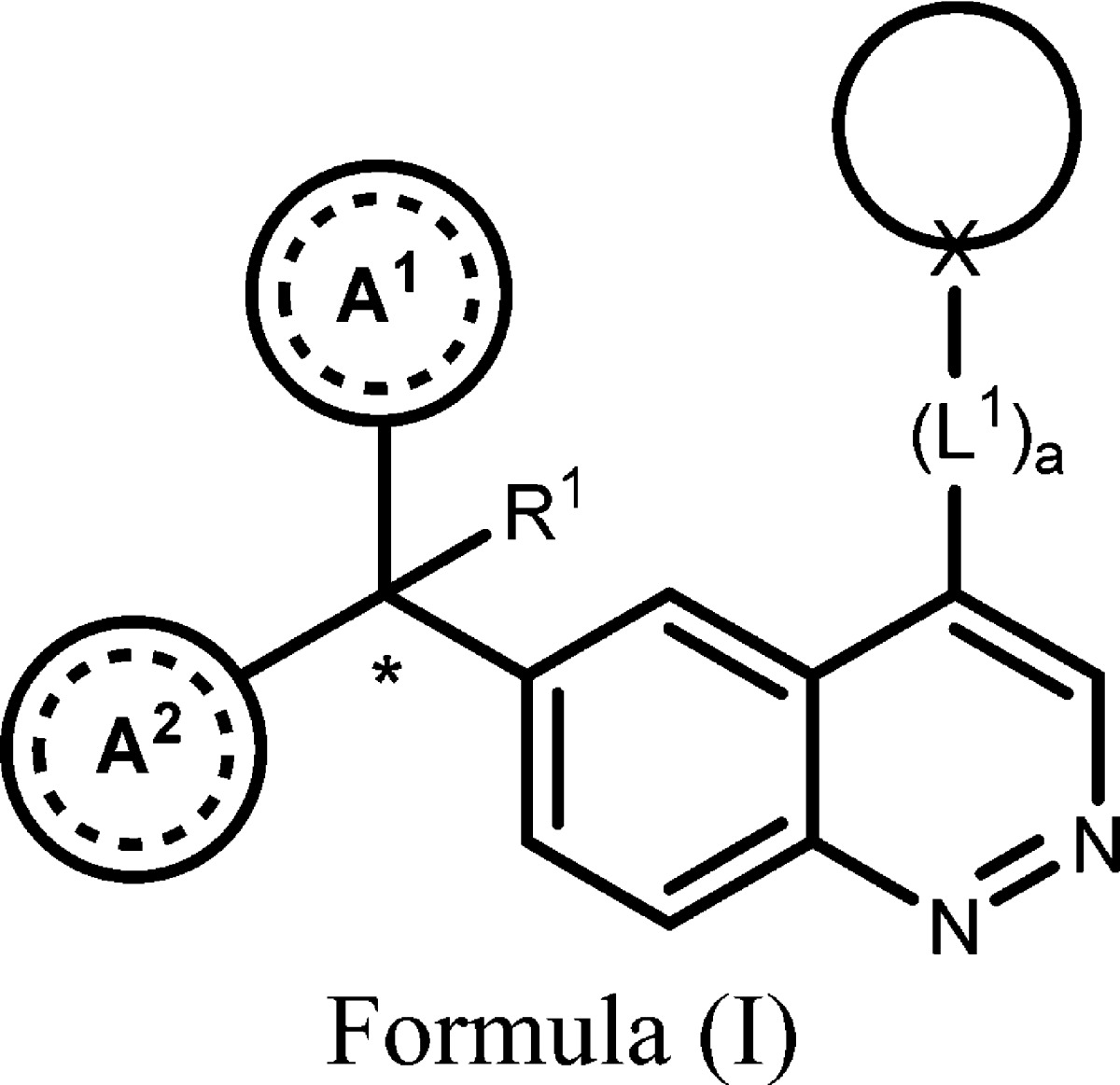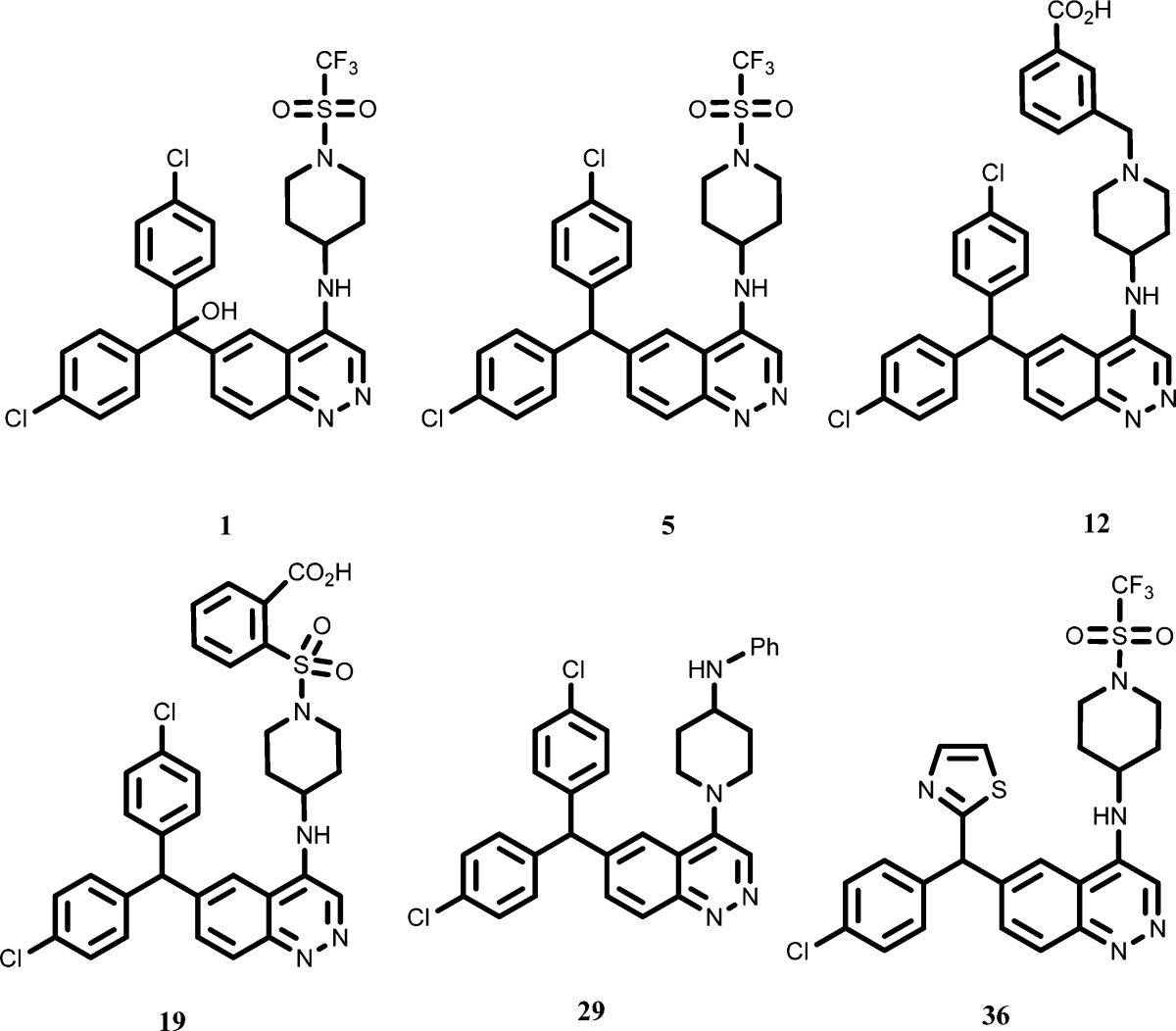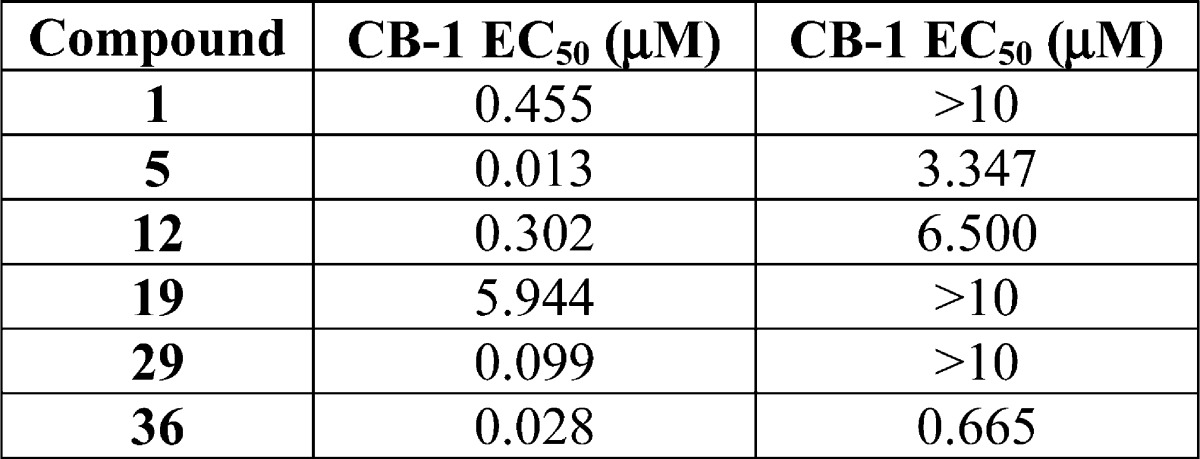| Summary: |
The invention in this patent application relates to cinnoline (benzopyridazine) derivatives represented generally by formula (I). These compounds are CB-1 receptor inverse agonists (antagonists) and may potentially provide useful treatments for metabolic disorders including but not limited to obesity, type II diabetes, metabolic syndrome, Syndrome X, and other related disorders. |
| The endocannabinoid system (ECS) contains cannabinoid receptors, endogenous ligands (endocannabinoids), and enzymes (used for synthesis and degradation). The cannabinoid receptors are located in the brain and throughout the central and peripheral nervous systems. ECS is involved in a variety of physiological processes including appetite, pain-sensation, mood, and memory. Cannabinoid (CB) receptors are cell membrane receptors that belong to the G protein-coupled receptor (GPCR) superfamily. The CB receptors contain the characteristic seven transmembrane spanning domains ofGPCRs and can be activated by either one of threemajor groups of ligands: endocannabinoids, plant cannabinoids, and synthetic cannabinoids |
| There are two known subtypes of cannabinoid receptors, cannabinoid 1 (CB-1) and cannabinoid 2 (CB-2). The CB-1 receptor is expressed mainly in the central nervous system as well as in the lungs, liver, and kidneys. The CB2 receptor is expressed mainly in the immune system and in hematopoietic cells. |
| Cannabinoids bind reversibly and stereoselectively to the cannabinoid receptors. Synthetic cannabinoids can be designed to bind selectively to either CB-1 or CB-2 and that has the potential of providing useful treatments for certain diseases such as obesity and other metabolic disorders. |
| Activation of CB-1 and CB-2 receptors results in a decrease in cAMP production. An inverse agonist of the CB-1 or CB-2 receptor can cause the reverse effect, i.e., increases cAMP production. The earlier CB-1 receptor inverse agonists such as rimonabant were capable of brain penetration (centrally penetrant). They were found to be effective for weight loss, glycemic control, and for the treatment of cardiovascular risk factors associated with obesity and type I or type II diabetes mellitus. However, they were also associated with serious adverse effects such as anxiety, depression, and suicidal ideation, which preclude their use. A better therapeutic approach is the use of peripherally restricted CB-1 receptor inverse agonists. They can avoid these adverse effects by selectively inhibiting the CB-1 receptors outside the blood−brain barrier (BBB), for example, in the liver, adipose tissue, and/or skeletal muscle. |
| Thus, there is a need for the design and development of new peripherally restricted CB-1 receptor inverse agonists such as the compounds described in this patent application, which can potentially be useful as treatments for metabolic disorders, such as obesity, type II diabetes mellitus, metabolic syndrome, syndrome X, and other disorders and conditions responsive to inverse agonism of the CB-1 receptor. |
| Important Compound Classes: |
 |
| Key Structures: |
The inventors described the structures and synthesis of 38 compounds of formula (I) including the following representative examples:
|
| Biological Assay: |
-
1.
CB-1 and CB-2 in Vitro Assay
-
2.
CB-1 and CB-2 Receptor Binding Assay
-
3.
Mouse Fast PK/BBB
-
4.
Chronic DIO Mouse
-
5.
Open Field Locomotor Activity in Rats (CNS Activity)
|
| Biological Data: |
Compounds of formula (I) were tested for activity against the CB-1 and CB-2 receptors. The EC50 values for the above representative examples are listed in the following table:
|
| Recent Review Articles: |
1. Kirilly E.; Gonda X.; Bagdy G.. Acta Physiol. (Oxf) 2012, 205 ( (1), ), 41−60. |
| 2. Fowler C. J.; Rojo M. L.; Rodriguez-Gaztelumendi A.. Exp. Neurol. 2010, 224 ( (1), ), 37−47. |
| 3. Bronander K. A.; Bloch M.. J. Vasc. Health Risk Manag. 2007, 3 ( (2), ), 181−190. |



